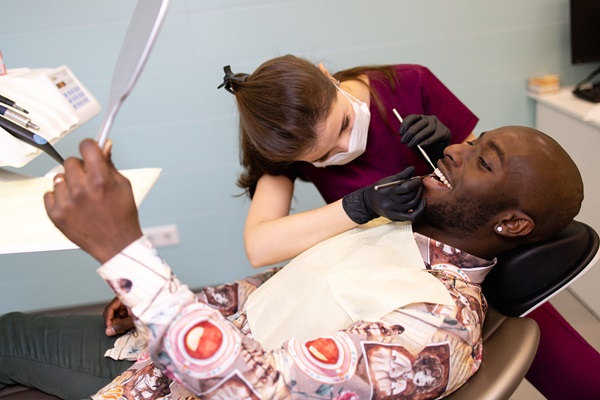Cosmetic Dentist: Corrective vs. Aesthetic Dentistry

A cosmetic dentist plays a crucial role in enhancing both the function and appearance of a patient's teeth. Some treatments are more effective for a smile's appearance than its function. Understanding the difference between corrective and aesthetic dentistry is essential for anyone considering dental improvements.
Corrective dentistry
Corrective dentistry addresses structural problems and functional issues within the oral cavity. It aims to restore proper function to the teeth and jaws, which can be affected by decay, trauma, or developmental anomalies.
- Orthodontic Treatments: Braces and aligners correct misaligned teeth and bite issues, improving chewing efficiency and reducing the risk of temporomandibular joint disorders.
- Restorative Procedures: Fillings, crowns, and bridges repair damaged or decayed teeth, restoring their strength and functionality.
- Dental Implants: Replacing missing teeth with implants prevents bone loss and maintains the integrity of facial structures.
A cosmetic dentist with expertise in corrective procedures ensures that the teeth's foundation is sound before proceeding with aesthetic enhancements.
Aesthetic dentistry
Aesthetic dentistry, on the other hand, concentrates on the visual aspects of the teeth and smile. The primary goal is improving overall appearance and boosting the patient's confidence and self-esteem.
- Teeth Whitening: Professional whitening removes stains and discoloration, resulting in a brighter smile.
- Veneers and Laminates: Thin shells placed over the front of teeth can alter their color, shape, and size for a more harmonious appearance.
- Cosmetic Bonding: Tooth-colored resin repairs chips, cracks, or gaps, enhancing the smile's aesthetics.
A cosmetic dentist utilizes these treatments to create a pleasing and natural-looking smile that complements the patient's facial features.
Choosing the right cosmetic dentist
Selecting a qualified cosmetic dentist is crucial for achieving optimal results in both corrective and aesthetic dentistry. Factors to consider can include credentials and experience; technology and techniques; and patient reviews and before-and-after photos.
Ensure the dentist has the necessary training and a proven track record in cosmetic procedures. A dentist who stays updated with the latest advancements can offer more effective and less invasive treatments. Evaluating previous work provides insight into the dentist's skill and aesthetic sense.
A well-qualified cosmetic dentist will guide patients through the decision-making process, explaining the benefits and limitations of each treatment option.
The benefits of combined dental approaches
Integrating corrective and aesthetic dentistry offers numerous advantages, like improved oral health, enhanced appearance, and long-term satisfaction. Correcting functional issues reduces the risk of decay, gum disease, and tooth loss. Aesthetic treatments provide a more attractive smile, positively impacting social and professional interactions. Addressing underlying problems ensures that cosmetic enhancements are durable and effective.
Consult a cosmetic dentist
Understanding the distinction between corrective and aesthetic dentistry is essential for making informed decisions about dental care. A cosmetic dentist combines these disciplines to not only improve the appearance of a smile but also to enhance overall oral health. By choosing a dentist skilled in both areas, patients can achieve a functional and beautiful smile that lasts a lifetime. For more information, schedule a consultation visit today at La Verne Dental & Implant Center.
To schedule a consultation, request an appointment on our website at https://lavernedentalimplant.com or call La Verne Dental & Implant Center at (909) 575-1034 for an appointment in our La Verne office.
Check out what others are saying about our dental services on Yelp: Cosmetic Dentist in La Verne, CA.
Related Posts
A cosmetic dentist is a great resource to utilize when looking to undergo teeth whitening. Their background in general dentistry means patients can receive care that is focused on both the form and function of the mouth. While the mouth's function is not affected by teeth whitening, the form can definitely be! When it comes to teeth…
Many people think dental care only concerns oral hygiene and health, but a form of dental care called cosmetic dentistry relates more to appearance than anything else. It focuses on the aesthetics of the teeth and works to change the size, shape, and color of people's dentition. Many cosmetic dental procedures help with both the…
There appears to be some overlap between dental restorations and cosmetic dentistry. However, people need to know the difference between the two because dental insurance may cover a dental restoration but not a cosmetic procedure. This article examines the key differences between the two types of dentistry and provides examples of each.The primary difference between…
You may need a type of dental restoration at some point in your life. There are many types of treatments available. Knowing how to select each one can give you the results that you need. Here are some tips on how to choose the right type of dental restoration procedure that will fit your dental…
